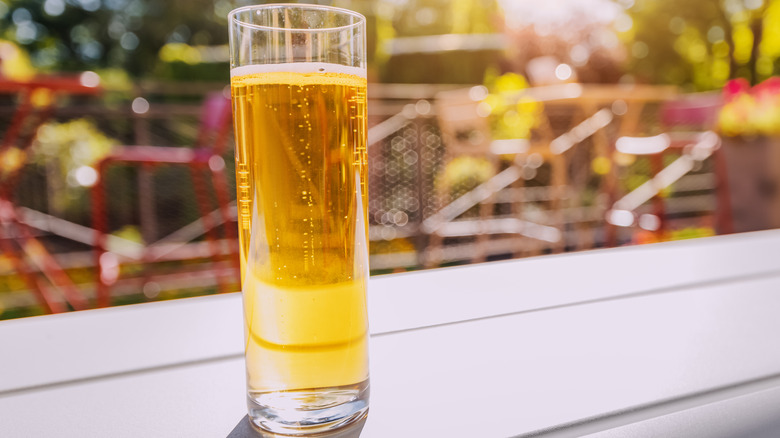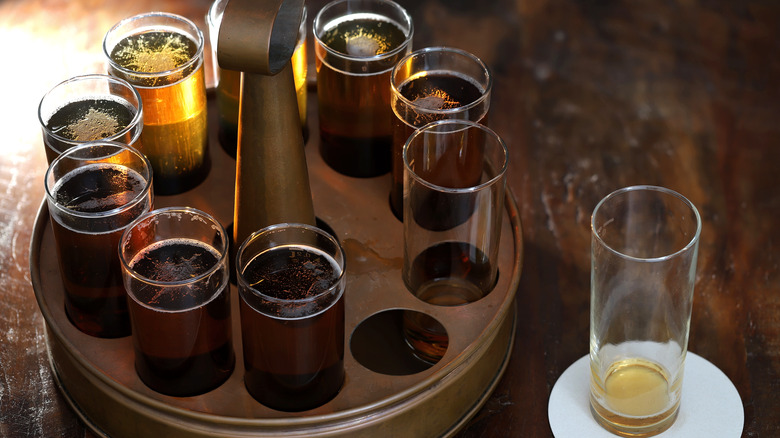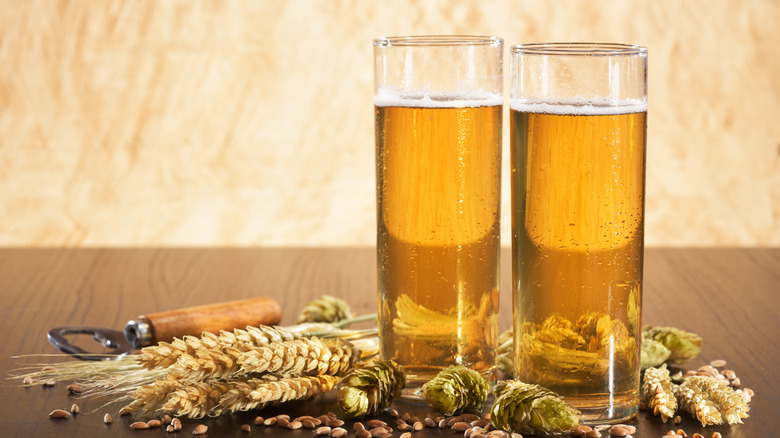What Is Kölsch Beer And What Makes It Unique?
There are all sorts of beer styles you're probably familiar with. Porters and stouts are dark and hearty beers, while IPAs (which are different from Pale Ales) bring an intense hoppy bitterness. Amber ales are refreshing and well-rounded. But there are other styles you might not be familiar with — and one of the best is kölsch.
To look at kölsch, with its distinctive golden color, you might think it's something akin to a light beer, all crispness and no body. When you taste it, though, you're quickly disabused of that notion because kölsch has a lot more going on beneath the surface compared to something like Bud Light. It's anything but bland, with both light, crisp fruit notes and bitter, bold hops flavor that complement each other rather than compete. It's a unique style of beer from anything else you'll find in the world — and it all has to do with kölsch's unique brewing process.
Kölsch's unique brewing technique makes it a hybrid
Generally, beers fall into two categories: lagers and ales. Ales involve top-fermenting yeast (which rises to the surface) brewed at extremely high temperatures — this is how you get the strong, hoppy flavors of IPAs. Meanwhile, lagers utilize yeast strains cooked at lower temperatures (bottom-fermenting yeast, so called because it tends to sink to the bottom of the barrel), which tend to prioritize malt flavor over anything else.
Kölsch is both and neither of these. Created in Cologne, Germany, in the late 19th century, kölsch is first brewed ale-style with top-fermenting yeast and high temperatures but then switches the game up, aging for an extended period in the same way as a lager. The result is a beer that doesn't fit neatly into either category. It has light crispness owing to a Pilsner malt, but that ale yeast gives it a hoppy, almost bread-like flavor.
Kölsch is extremely versatile
Kölsch is a surprisingly versatile beer that pairs well with far more foods than many of its contemporaries. It's light enough to work with more delicate flavors (like a rice beer with Asian dishes) but has enough body to match up with many somewhat heavier ones (with German food, this means something like bratwurst). The only real way to go wrong is to match it with food so heavy that it overwhelms the beer — in which case your options are going to be limited to the fullest-bodied options regardless.
Traditionally, kölsch is also served in a unique vessel called a stange, a tall, narrow glass designed to show how clear the beer is. American breweries may not always serve it this way, but you'd be hard-pressed to find it another way in its home city. If you're ever in Cologne — or just in an American brewery that knows what's up — give kölsch a try. You won't regret it.


